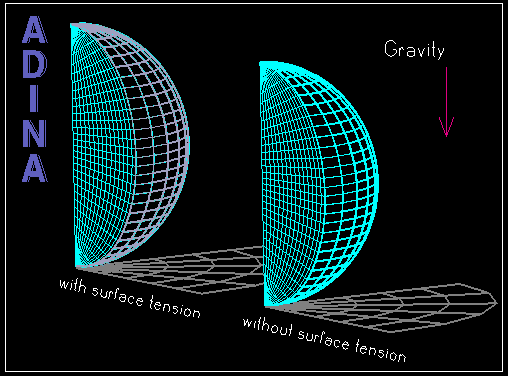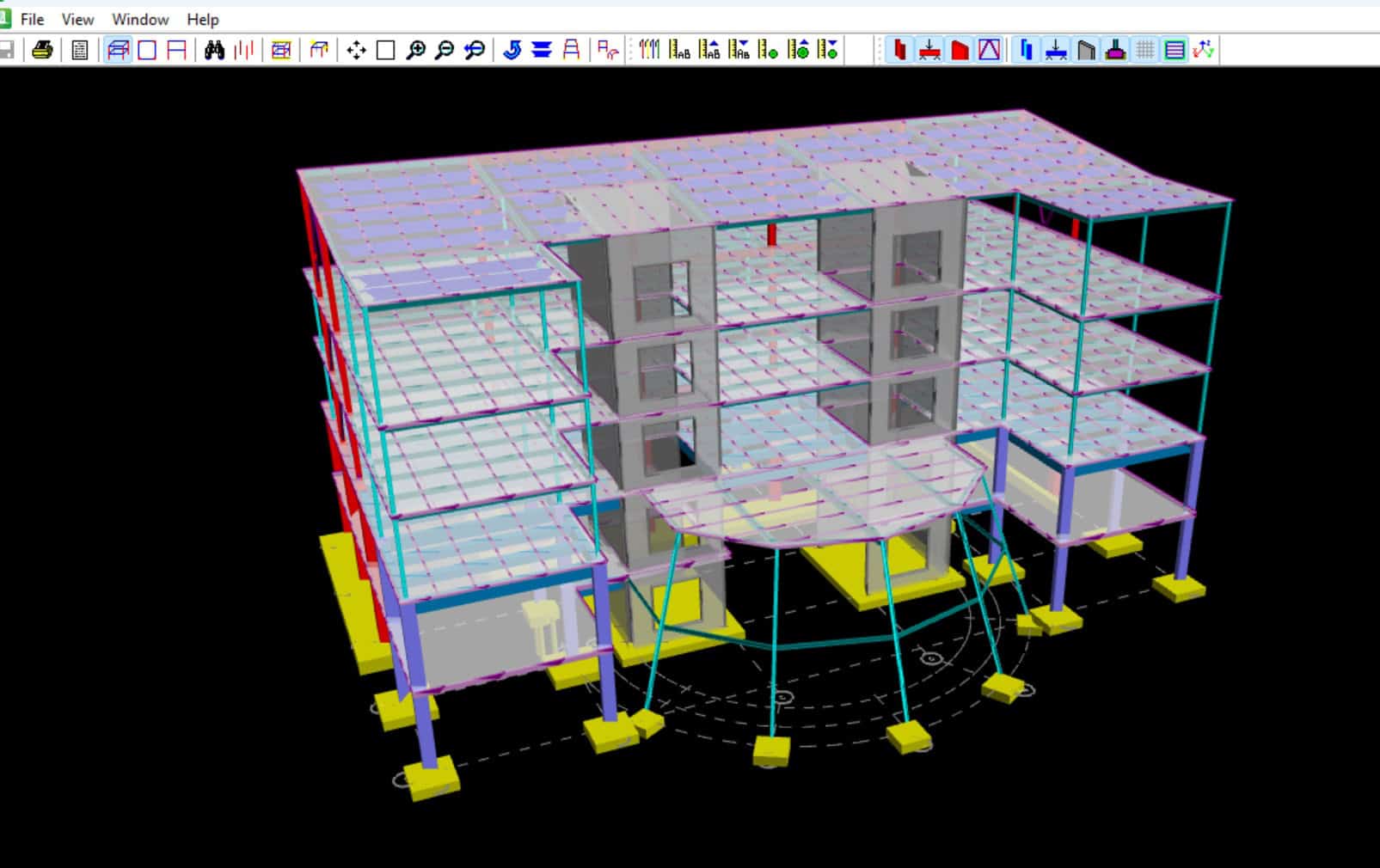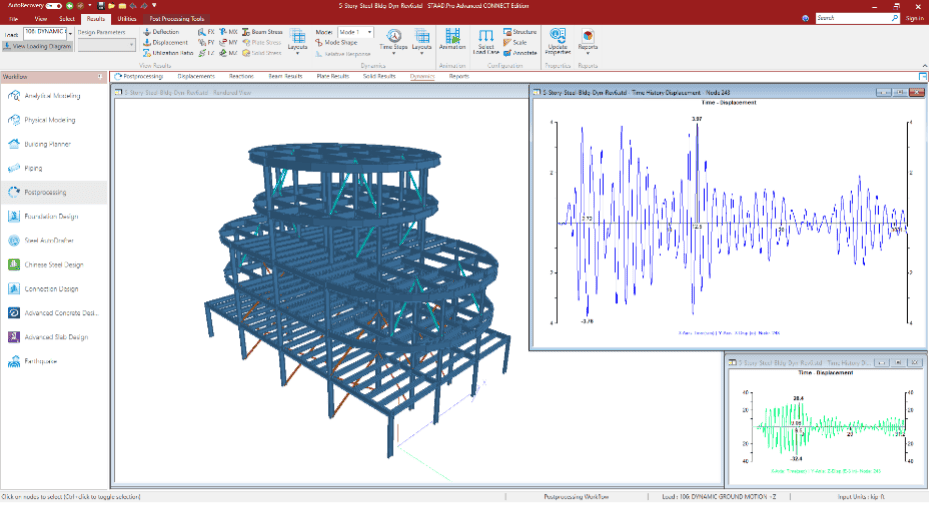The new surface tension option is implemented in the ADINA program, version 8.0. This new option allows the user to assign a surface tension value to selected lines (for 2-D planar and axisymmetric problems) or surfaces (for 3-D problems). The surface tension option can be used even if the boundaries undergo excessive deformation. This feature is useful in accurately modeling viscous materials such as cells, living tissues and heated glass. The effect of surface tension is also significant in MEMS sensors/actuators and other small-sized devices.
The new surface tension option can, of course, be used in fluid- structure interaction analysis. A similar surface tension feature already exists in the ADINA-F program.
The above animation shows the motion of two viscous droplets due to gravity as they contact a rigid flat surface (the droplets have zero initial velocity). The presence of surface tension limits the spread of the spherical droplet.





